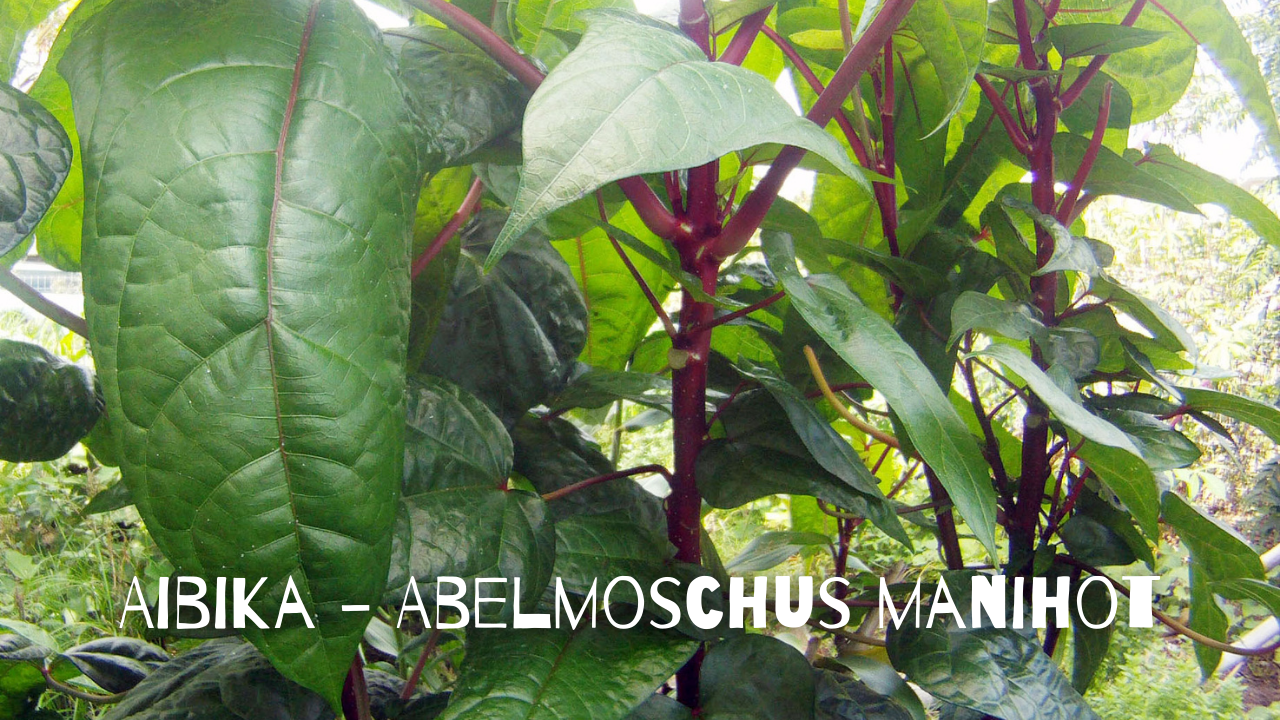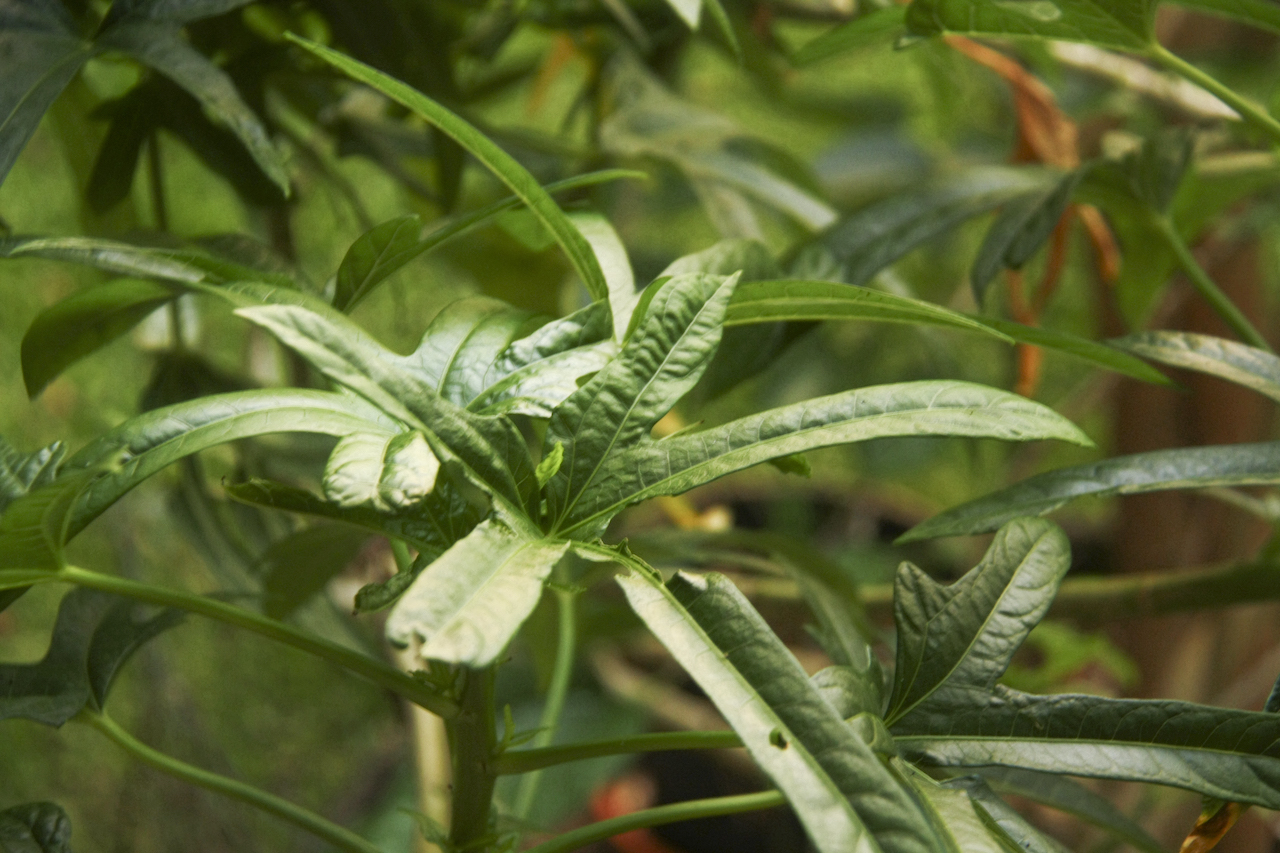Aibika - Abelmoschus manihot
Apr 18, 2023
Keynotes: Plant in shrub layer of a food forest, protects the soil, can eat leaves, high in silica used for compost teas.
I have 2 varieties in my garden; the red-stemmed wide leaf featured in the image above is great for using to wrap food. The other has leaves shaped like hands seen in the image below. My favourite way to eat this one is steaming the top 8 cm of the fresh tips and then adding the leaves when serving as they cook quickly. It is our broccoli alternative during the wet season, very delicious in soups.
Get acquainted with the nutritious and delicious edible plants that almost grow themselves so you can create food security in your home garden. This blog provides the keynotes for use, my anecdotal experience, placement in my permaculture system, plus all the facts to identify, grow and eat this plant!
Between these two varieties and the plethora of our other incredible edible plants (see my blog with the list), I have enough to supply our family. In my experience, they will suffer in a cyclone, falling over or snapping, so if one is coming, it's best to prune back and make use of the food whilst bunkering down. The stems can be put into a bucket of water to propagate in this case, too, so it's not all a loss! Additionally, it can be 'chopped and dropped' back into the soil, or better yet, I add it to a big bin of water with other weeds and plants (like comfrey) to ferment and water back into the garden for mineral-rich fertility.
 Common Names: Aibika, Tree spinach, Hibiscus spinach, Ibika, Bele, Vauvau, Pele, Ailan Kapis, Tororo Aoi, Sunset, Muskmallow, Sunset hibiscus, Lettuce tree, Queensland greens.
Common Names: Aibika, Tree spinach, Hibiscus spinach, Ibika, Bele, Vauvau, Pele, Ailan Kapis, Tororo Aoi, Sunset, Muskmallow, Sunset hibiscus, Lettuce tree, Queensland greens.
Origin: Tropical Asia.
Description: This plant is a short-lived perennial shrub, widespread throughout the tropics. It grows 2-3 m high with large, nearly round, soft green leaves. There is a wide range of leaf shapes grown, especially in PNG, with up to 70 types. It is a hardy plant that thrives when it is warm and wet. It can be prone to caterpillars. It is a very nutritious vegetable; the leaves are high in vitamins A, C, and iron and have 2% protein by dry weight. In the hibiscus family, the flowers are attractive too. It is often planted along borders of gardens or as an inter-crop throughout many traditional gardens in the tropics. It is high in silica; add it to weed tea for this reason.
Growing Details: It is easily propagated from cuttings 10-20cm long, half-buried in potting mix and kept moist, 60cm apart.
Soil: Fertile, kept well mulched.
Sun: Prefers full sun but will grow in partial shade.
Water: Needs ample water in the dry, growing fast in the wet season.
EAT: Young leaves and shoots enjoyed raw, steamed, boiled, stir-fried or added to soups. The large soft leaves can be used to wrap food, similar to the vine or cabbage leaves. The leaves cook quickly, so add them last to steamed veggies or stir-fry. The leaves contain mucilage, giving a slightly slimy feel to the mouth. In Japan, Aibika is used to make Neri, a form of handmade paper. It is also used in a similar way in Korea in making Hanji. Wrap salad mixes or rice inside the large leaves.
 If this information was helpful, learn about more of the plants we love to grow and eat here: Incredible Edibles Tropical Superfoods Guide. My Pesto recipe is featured in it too! in my Grab my book here or join my mailing list to stay tuned for future blogs with these 'garden to plate' recipes.
If this information was helpful, learn about more of the plants we love to grow and eat here: Incredible Edibles Tropical Superfoods Guide. My Pesto recipe is featured in it too! in my Grab my book here or join my mailing list to stay tuned for future blogs with these 'garden to plate' recipes.
If you already have my book, you might like to expand your garden species with Blake Hudson's book: Tropical Food Plants, which is an extensive resource that explores the incredible diversity of more than 121 edible tropical plants that can be grown in tropical and sub-tropical regions around the world. He has carefully selected the most appropriate for tropical regions, such as Australia, Florida and the Asia Pacific. Learn more about it here: Tropical Food Plants - A Field Guide to Tropical Edible Plants, by the EarthEartisan.
Tropical gardening can be easy if you know what you are doing. It is true to say that it is a whole different experience to temperate climates. My blog: Tropical Planting Guide - A List of Plants Annual Vegetable Gardening, offers some insight into the best growing times with respect to our wet and dry seasons and, better yet, grab the free download to print and use to plan your abundant veggie patch. I have also provided some gardening tips that will help you on your garden-to-plate journey, such as planting by the moon, staggering harvests and seed suppliers!
If it is the practical hands-on and permaculture design skills you want to gain, then come along to learn with like-minded folk in our garden (mine and Blake's) or other wonderful demonstration sites in our FNQ region. You can learn more about my offerings here: https://www.earthmumma.co/workshops-courses.
Yes, we have plants available in our home nursery. Please contact me if you would like to order some to get your garden growing!









